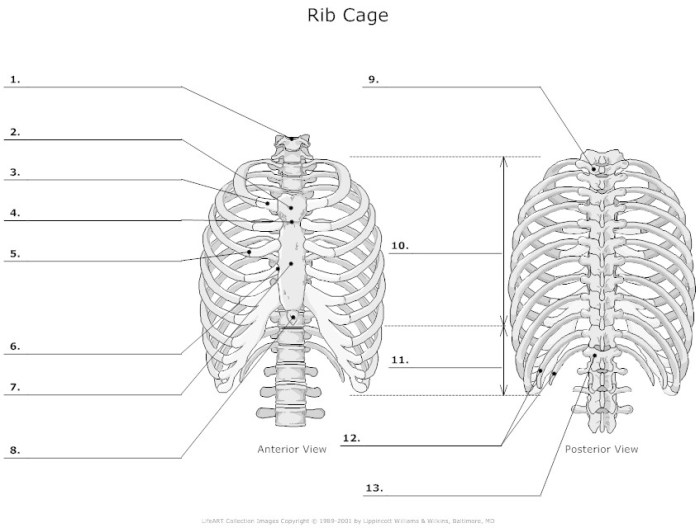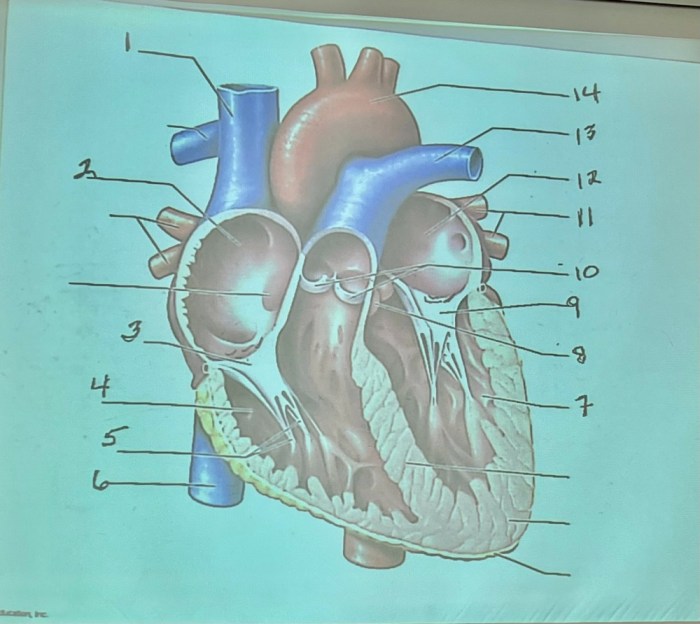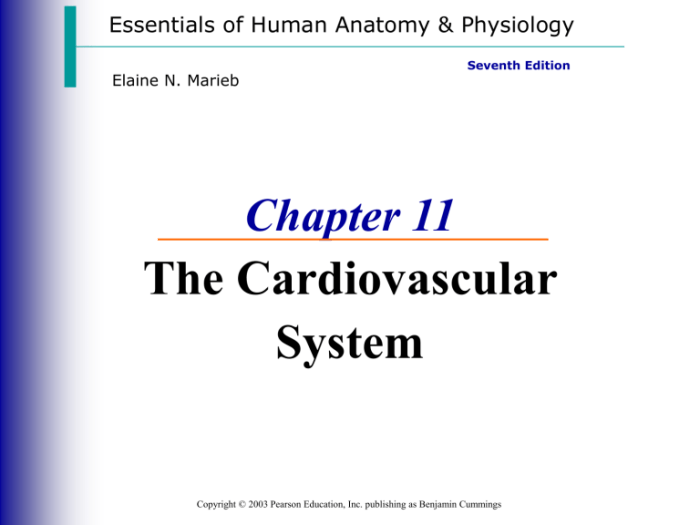Chapter 11 the cardiovascular system packet – Embark on a captivating journey into Chapter 11: The Cardiovascular System, where we unravel the intricacies of this vital system, exploring its structure, function, and significance in health and disease. Delving into the realm of anatomy, physiology, and pathology, this comprehensive guide offers a profound understanding of the heart, blood vessels, and blood, equipping you with a deep appreciation for the remarkable workings of the human body.
As we delve deeper into this chapter, we will discover the intricate interplay between the heart, blood vessels, and blood, examining how they orchestrate the transport of oxygen, nutrients, and waste products throughout the body. We will also explore the mechanisms that regulate blood pressure and heart rate, ensuring the efficient delivery of oxygen and nutrients to every cell.
The Structure and Function of the Cardiovascular System

The cardiovascular system is a complex network of organs and vessels that work together to circulate blood throughout the body. Its primary function is to deliver oxygen and nutrients to tissues and organs, and to remove waste products. The cardiovascular system consists of the heart, blood vessels, and blood.
The heart is a muscular organ that pumps blood through the body. It is divided into four chambers: two atria (upper chambers) and two ventricles (lower chambers). The atria receive blood from the body and the ventricles pump blood out to the body.
Blood vessels are channels that carry blood throughout the body. There are three types of blood vessels: arteries, veins, and capillaries. Arteries carry blood away from the heart, veins carry blood back to the heart, and capillaries are tiny vessels that allow for the exchange of oxygen and nutrients between the blood and the tissues.
Blood is a complex fluid that contains red blood cells, white blood cells, platelets, and plasma. Red blood cells carry oxygen, white blood cells fight infection, platelets help to stop bleeding, and plasma is the liquid component of blood.
Circulatory Pathways, Chapter 11 the cardiovascular system packet
The cardiovascular system has two main circulatory pathways: the pulmonary circuit and the systemic circuit.
- The pulmonary circuit carries blood from the heart to the lungs and back to the heart.
- The systemic circuit carries blood from the heart to the rest of the body and back to the heart.
The pulmonary circuit is responsible for oxygenating the blood. The systemic circuit is responsible for delivering oxygen and nutrients to the tissues and organs of the body.
Mechanisms of Blood Flow and Pressure Regulation
Blood flow is regulated by a number of factors, including the heart rate, the diameter of the blood vessels, and the viscosity of the blood.
The heart rate is controlled by the sinoatrial node (SA node), which is located in the right atrium. The SA node generates electrical impulses that cause the heart to contract.
The diameter of the blood vessels is controlled by the sympathetic and parasympathetic nervous systems. The sympathetic nervous system causes the blood vessels to constrict, while the parasympathetic nervous system causes the blood vessels to dilate.
The viscosity of the blood is controlled by the concentration of red blood cells. The more red blood cells in the blood, the more viscous the blood is.
Detailed FAQs: Chapter 11 The Cardiovascular System Packet
What are the main components of the cardiovascular system?
The cardiovascular system comprises the heart, blood vessels (arteries, veins, and capillaries), and blood.
How does the heart pump blood?
The heart pumps blood through a coordinated sequence of electrical and mechanical events known as the cardiac cycle, involving the contraction and relaxation of the heart chambers.
What is the function of blood vessels?
Blood vessels transport blood throughout the body, delivering oxygen and nutrients to tissues and removing waste products.
What is the composition of blood?
Blood is composed of red blood cells, white blood cells, platelets, and plasma.

